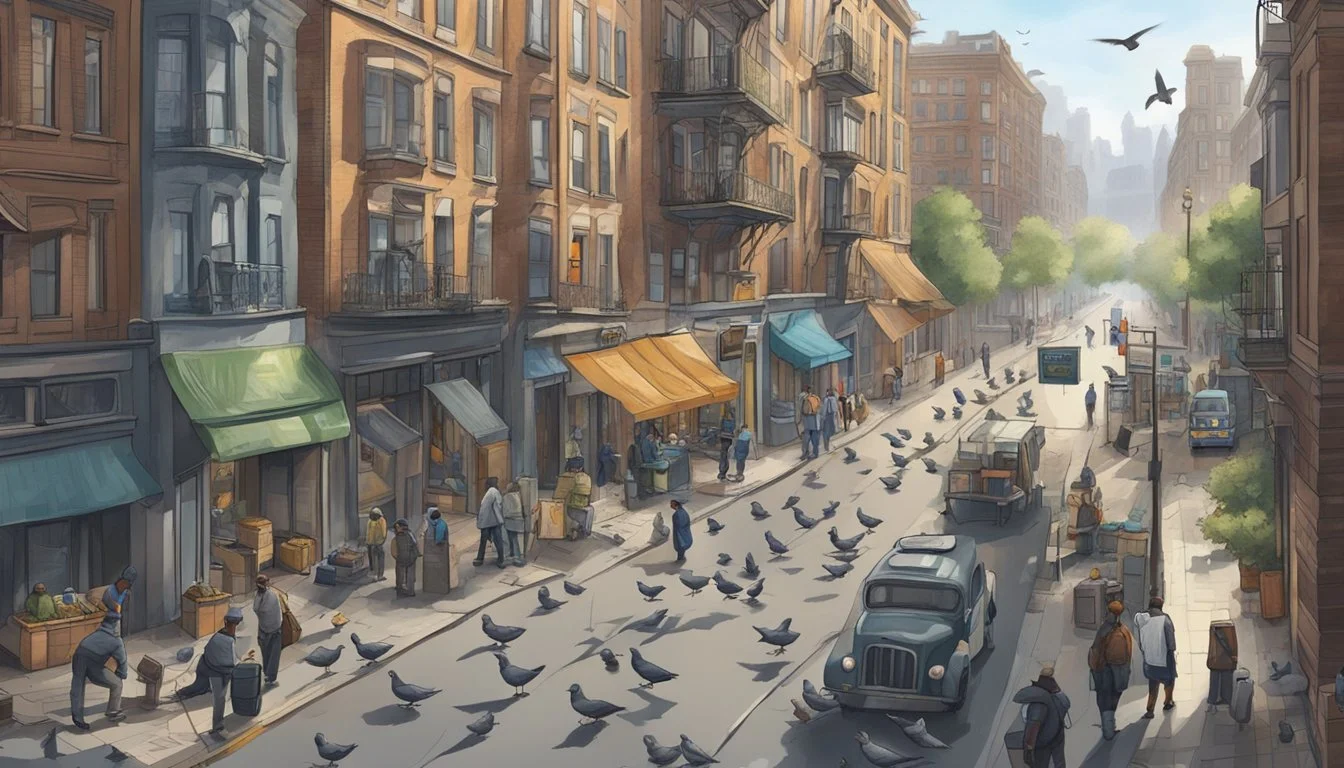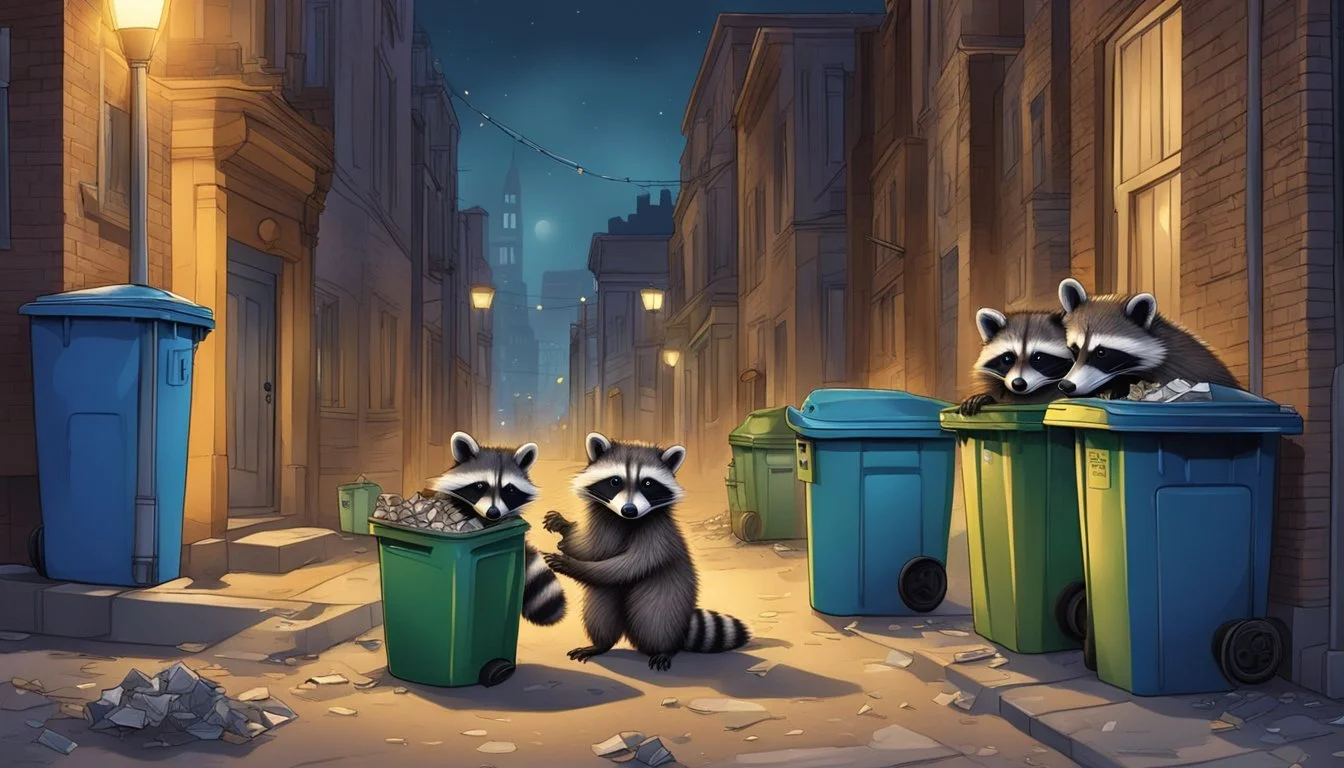4 Documentaries About Urban Hunting and Pest Control
Exploring City Wildlife Management
Urban environments present unique challenges when it comes to wildlife management and pest control. As human populations grow and expand into natural habitats, conflicts with animals inevitably arise. These documentaries explore the complex relationship between humans and urban wildlife, focusing on innovative approaches to address pest issues in cities.
Pest control specialists and wildlife managers employ various techniques to maintain a delicate balance in urban ecosystems. From traditional trapping methods to more unconventional approaches using trained animals, these films showcase the ingenuity and dedication of those working to mitigate human-wildlife conflicts. The documentaries offer viewers a behind-the-scenes look at the often unseen efforts to keep cities safe and habitable for both humans and animals alike.
1) Rats, Bats and Bugs: Urban Hunting Adventures
"Rats, Bats and Bugs" offers a fascinating look into urban pest control. This documentary series explores the challenges of managing wildlife in city environments.
One episode features Scott and Angie Mullaney, owners of Unique Pest Management. They use trained dogs to hunt rats in urban areas, showcasing an innovative approach to rodent control.
The series also covers other urban pests, including bats and various insects. It highlights the importance of effective pest management in maintaining public health and urban hygiene.
Viewers gain insight into the daily lives of pest control professionals. The show demonstrates the skills and dedication required to tackle infestations in densely populated areas.
"Rats, Bats and Bugs" combines educational content with engaging storytelling. It sheds light on an often-overlooked aspect of city life, revealing the ongoing battle against urban pests.
For more information: Rats, Bats and Bugs on TV Guide
2) The Pigeon Paradox: City Pest Control Strategies
Urban environments face unique challenges in managing pigeon populations. The documentary "The Pigeon Paradox" explores the complex relationship between city dwellers and these ubiquitous birds.
The film examines how pigeons have adapted to thrive in urban settings, often leading to conflicts with residents and businesses. It highlights the importance of understanding pigeon behavior for effective control strategies.
Natural pest control methods are showcased, including modifying environments to limit food sources and nesting sites. The documentary emphasizes that combining multiple humane techniques yields the most effective results in urban pigeon management.
Experts discuss the balance between conservation efforts and pest control, noting that urban nature experiences can influence people's attitudes towards wildlife conservation. The film presents the paradox that city pigeons, often seen as pests, may play a role in fostering environmental awareness.
"The Pigeon Paradox" offers insights into sustainable urban ecosystem management and the challenges of coexisting with wildlife in densely populated areas.
[More information about "The Pigeon Paradox" documentary]
3) Raccoons in the City: Balancing Nature and Nuisance
"Raccoons in the City: Balancing Nature and Nuisance" explores the complex relationship between urban raccoons and human residents. This documentary examines how raccoons have adapted to city life, showcasing their intelligence and problem-solving abilities.
The film highlights the challenges faced by urban wildlife managers as they attempt to maintain ecological balance. It presents various perspectives, from those who view raccoons as pests to others who appreciate their role in urban biodiversity.
Experts discuss the impact of human behavior on raccoon populations, including issues like improper waste disposal and intentional feeding. The documentary also covers innovative, humane solutions for managing raccoon-human conflicts in urban areas.
Viewers gain insight into raccoon behavior, their contributions to urban ecosystems, and strategies for coexistence. The film encourages a nuanced understanding of these adaptable creatures and their place in our cities.
More information about "Raccoons in the City: Balancing Nature and Nuisance"
4) From Cockroaches to Coyotes: A Modern Urban Safari
Urban environments harbor a surprising array of wildlife. This documentary explores the diverse creatures that have adapted to city life, from tiny insects to larger mammals.
The film begins by examining cockroaches, nature's ultimate survivors. It showcases their remarkable ability to thrive in urban settings, highlighting their resilience and adaptability.
Moving up the food chain, the documentary focuses on rats and pigeons. These animals have become synonymous with city living, often seen as pests but playing important roles in urban ecosystems.
The film then shifts to larger animals like raccoons and opossums. It reveals how these intelligent creatures navigate human-dominated landscapes, often outsmarting our attempts to deter them.
Finally, the documentary explores the presence of coyotes in urban areas. Once confined to rural regions, these adaptable canines now roam city streets and parks, presenting new challenges for wildlife management.
Through stunning footage and expert interviews, this film offers a fresh perspective on urban wildlife. It encourages viewers to see cities as complex ecosystems teeming with life.
More information about "From Cockroaches to Coyotes: A Modern Urban Safari"
Understanding Urban Hunting
Urban hunting involves pursuing game animals within or near populated areas. It has emerged as a solution to wildlife overpopulation issues in cities and suburbs. This practice requires specialized skills and adherence to strict regulations.
History of Urban Hunting
Urban hunting traces its roots to the rapid expansion of cities into wildlife habitats. As human populations grew, conflicts with animals increased. In the early 20th century, some cities began allowing controlled hunts to manage deer populations.
The practice gained traction in the 1980s and 1990s as deer numbers surged in suburban areas. Many municipalities implemented urban archery seasons to address the issue. Today, urban hunting programs exist in numerous states across the U.S.
These initiatives often focus on bowhunting due to safety concerns in populated areas. Some cities have expanded programs to include other species like turkeys and coyotes.
Ethical Considerations
Urban hunting raises unique ethical questions. Hunters must prioritize safety and minimize disturbance to residents. Many programs require proficiency tests and safety courses.
Property boundaries and restricted areas pose challenges. Hunters need permission to access private land and must be aware of nearby homes and businesses.
Animal welfare is a key concern. Quick, humane kills are essential in urban settings. Some critics argue that non-lethal methods should be used instead.
Proper disposal of harvested animals is crucial. Many programs donate meat to local food banks, addressing food insecurity while managing wildlife populations.
Public perception remains mixed. Education efforts aim to explain the ecological benefits and necessity of urban hunting programs.
Pest Control Practices in Urban Areas
Urban pest control requires specialized approaches to address unique challenges in densely populated areas. Effective strategies balance pest elimination with safety and environmental concerns.
Integrated Pest Management
Integrated Pest Management (IPM) is a cornerstone of urban pest control. This approach combines prevention, monitoring, and targeted treatments. IPM emphasizes non-chemical methods first, using pesticides only when necessary.
Key IPM tactics include:
Sealing entry points to prevent pest intrusion
Removing food and water sources
Regular inspections to catch problems early
Using traps and baits strategically
Applying pesticides judiciously when other methods fail
IPM programs often involve educating residents on proper sanitation and pest prevention. Professional pest control firms work closely with property managers to implement comprehensive IPM plans tailored to specific urban environments.
Environmental Impact
Urban pest control practices aim to minimize negative effects on the environment and non-target species. Pest management professionals carefully select control methods to reduce ecological harm.
Environmentally-friendly pest control techniques include:
Using pheromone traps to disrupt pest mating cycles
Employing biological controls like beneficial insects
Selecting low-toxicity pesticides when chemical treatments are needed
Precise application methods to limit pesticide spread
Urban pest control also focuses on protecting water quality by preventing pesticide runoff. Many cities have regulations governing pesticide use in urban areas to safeguard public health and the environment.






